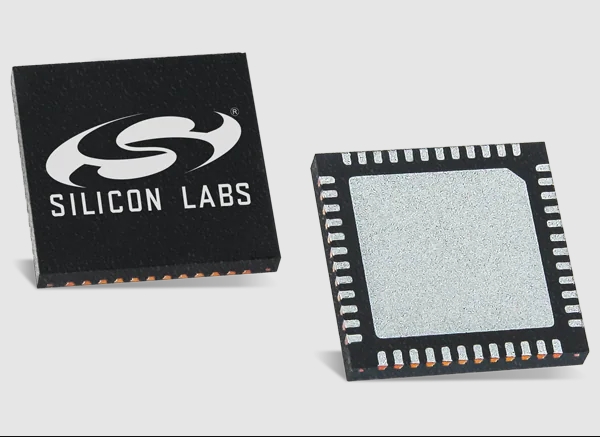EFR32M Series: Comprehensive Analysis and Application of High-Performance Wireless SoC


The EFR32M series is a series of high-performance, low-power wireless system-on-chip (SoC) launched by Silicon Labs, which is widely used in the fields of Internet of Things (IoT), smart home, industrial automation, etc. This article will introduce in detail the characteristics, technical specifications, application scenarios and how to use and develop the EFR32M series correctly.
Overview of EFR32M Series
1. Basic Introduction
- Definition: The EFR32M series is a wireless SoC based on the ARM Cortex-M4 core, integrating multiple wireless protocol stacks and supporting multi-band and multi-protocol operations.
- Main Features:
- High Performance: Powerful processing power and rich peripheral resources.
- Low Power Consumption: Optimized power management to extend battery life.
- Multi-protocol Support: Supports multiple wireless protocols such as Bluetooth Low Energy (BLE), Zigbee, Thread, Wi-Fi, etc.
- Security: Built-in hardware encryption engine to provide high-level data security protection.
EFR32M Technical Specifications
1. Processor
- Core: ARM Cortex-M4.
- Frequency: up to 76.8 MHz.
- Memory:
- Flash: up to 1024 KB.
- RAM: up to 256 KB.
2. Wireless Functions
Supported Protocols:
- Bluetooth Low Energy (BLE): supports Bluetooth 5.1 and above.
- Zigbee: supports Zigbee 3.0.
- Thread: supports OpenThread.
- Wi-Fi: some models support Wi-Fi 4 (802.11n).
Frequency Bands:
- 2.4 GHz: suitable for BLE, Zigbee, Thread, etc..
- Sub-GHz: suitable for long-distance communication.
- Wi-Fi: 2.4 GHz and 5 GHz.
3. Peripherals
- GPIO: rich general-purpose input and output pins.
- ADC/DAC: high-precision analog-to-digital converter and digital-to-analog converter.
- Timer/Counter: multiple timers and counters.
- Serial Interface: UART, SPI, I²C, etc.
- USB: some models support USB interface.
4. Power management
- Low power mode: multiple low power modes, such as deep sleep mode, hibernation mode, etc..
- Battery life: optimized power management to extend battery life.
5. Security
- Hardware encryption: AES-128/256, SHA-1/256, ECC, etc.
- Secure boot: prevent unauthorized firmware updates.
- True random number generator: improve the security of encryption algorithms.
EFR32M series application scenarios
1. Smart home
- Smart bulbs: control light brightness and color through BLE or Zigbee.
- Smart door locks: remote control and authentication through BLE.
- Thermostats: connect to smart home networks through Zigbee or Thread to achieve remote temperature control.
- Security systems: interconnect and monitor sensors through multiple wireless protocols.
2. Industrial automation
Sensor nodes: long-distance data transmission through Sub-GHz bands.
Asset tracking: device positioning and status monitoring through BLE or Zigbee.
3. Healthcare
Wearable devices: connect to smartphones via BLE to monitor physiological parameters such as heart rate and blood pressure.
4. Smart city
Smart street lights: remote control and energy-saving management of street lights through Zigbee or Thread.
Environmental monitoring: monitoring of environmental parameters such as air quality and noise through multiple wireless protocols.
EFR32M series development tools and support
1. Development tools
- Simplicity Studio: an integrated development environment (IDE) provided by Silicon Labs, supporting code editing, compilation, debugging and other functions.
- Software library: provides rich software libraries and sample codes to simplify the development process.
- Hardware development board: provides a variety of development boards to facilitate developers to design prototypes and test.
2. Technical support
- Documentation: detailed technical documentation, including data sheets, user guides, application notes, etc.
- Community: an active developer community that provides technical support and experience sharing.
- Training: Online and offline training courses are held regularly to help developers quickly master relevant technologies.
What are the representative models of the EFR32M series?
1. EFR32MG1 Series
Features:
- High-performance ARM Cortex-M4 core with a maximum frequency of 76.8 MHz.
- Built-in 256 KB to 1024 KB flash memory and 32 KB to 256 KB RAM.
- Supports multiple wireless protocol stacks for multi-protocol applications.
- Low power design to extend battery life.
- Built-in hardware encryption engine to provide a high level of data security protection.
2. EFR32MG12 Series
Features:
- ARM Cortex-M4 core with a maximum frequency of 76.8 MHz.
- Built-in 256 KB to 1024 KB flash memory, 32 KB to 256 KB RAM.
- Supports multiple wireless protocol stacks for multi-protocol applications.
- Low power design to extend battery life.
- Built-in hardware encryption engine to provide high-level data security protection.
- Enhanced peripheral resources, such as more GPIO, ADC channels, etc.
3. EFR32MG13 Series
Features:
- ARM Cortex-M4 core, with a maximum frequency of 76.8 MHz.
- Built-in 256 KB to 1024 KB flash memory, 32 KB to 256 KB RAM.
- Supports multiple wireless protocol stacks for multi-protocol applications.
- Low power design to extend battery life.
- Built-in hardware encryption engine to provide high-level data security protection.
- Enhanced security features, such as true random number generator (TRNG), etc.
4. EFR32MG21 Series
Features:
- ARM Cortex-M33 core, with a maximum frequency of 76.8 MHz.
- Built-in 256 KB to 1024 KB flash memory, 32 KB to 256 KB RAM.
- Supports multiple wireless protocol stacks for multi-protocol applications.
- Low power design to extend battery life.
- Built-in hardware encryption engine to provide high-level data security protection.
- Support Secure Vault technology to enhance data security.
5. EFR32MG22 Series
Features:
- ARM Cortex-M33 core, with a maximum frequency of 76.8 MHz.
- Built-in 256 KB to 1024 KB flash memory, 32 KB to 256 KB RAM.
- Supports multiple wireless protocol stacks for multi-protocol applications.
- Low power design, extended battery life.
- Built-in hardware encryption engine, providing high-level data security protection.
- Supports Secure Vault technology, enhanced data security.
- Enhanced RF performance, improved transmission distance and reliability.
6. EFR32MG24 Series
Features:
- ARM Cortex-M33 core, up to 78 MHz.
- Built-in 256 KB to 1536 KB flash memory, 64 KB to 384 KB RAM.
- Supports multiple wireless protocol stacks for multi-protocol applications.
- Low power design, extended battery life.
- Built-in hardware encryption engine, providing high-level data security protection.
- Supports Secure Vault technology, enhanced data security.
- Enhanced RF performance, improved transmission distance and reliability.
- Supports AI/ML functions, suitable for smart devices and edge computing applications.
7. EFR32BG22 Series
Features:
- ARM Cortex-M33 core, with a maximum frequency of 78 MHz.
- Built-in 256 KB to 512 KB flash memory, 32 KB to 256 KB RAM.
- Low power design, extended battery life.
- Built-in hardware encryption engine, providing a high level of data security protection.
- Support Secure Vault technology to enhance data security.
- Suitable for Bluetooth low energy applications such as wearable devices, health monitoring devices, etc.
Summary
- EFR32MG1 Series: Suitable for basic multi-protocol applications, supporting Zigbee, Thread and BLE.
- EFR32MG12 Series: Enhanced peripheral resources, suitable for applications that require more I/O and ADC channels.
- EFR32MG13 Series: Enhanced security features, suitable for applications with higher requirements for data security.
- EFR32MG21 Series: Adopts ARM Cortex-M33 core, supports Secure Vault technology, and enhances data security.
- EFR32MG22 Series: Further enhances RF performance, suitable for applications requiring high reliability and long transmission distance.
- EFR32MG24 Series: Supports AI/ML functions, suitable for smart devices and edge computing applications.
- EFR32BG22 Series: Focuses on Bluetooth low-power applications, suitable for wearable devices and health monitoring devices.
What is the difference between EFR32MG21 and EFR32BG24?
Storage
- EFR32MG24 flash storage has been increased to 1536 KB or 1024 KB, (compared 512, 768, or 1024 KB in the EFR32MG21).
Communication protocol support
- The EFR32MG21 is mainly for Zigbee and Thread protocols, and also supports Bluetooth Low Energy (BLE). It is suitable for application scenarios that require mesh networking capabilities.
- The EFR32BG24 focuses on Bluetooth technology, including Bluetooth 5.2 and Bluetooth Low Energy, and supports Bluetooth Mesh. In addition, it also supports some proprietary 2.4GHz protocols.
Performance and architecture
- The EFR32MG21 is usually based on the ARM Cortex-M33 core, providing good processing performance and security features.
- The EFR32BG24 is also based on the ARM Cortex-M33 core, but it may have a higher clock speed and enhanced RF performance, such as higher transmit power and receive sensitivity, to provide better connection stability and range.
Features and Applications
- The EFR32MG21 is well suited for smart home, smart lighting, and other IoT applications that require Zigbee or Thread mesh networks.
- The EFR32BG24 is suitable for applications that have high requirements for Bluetooth connectivity, such as audio devices, wearable devices, asset tracking, etc., especially those that need to take advantage of the latest Bluetooth features.
Security
- Both integrate advanced security features, such as hardware cryptographic accelerators, true random number generators (TRNG), etc. to protect data security. However, the specific implementation details may vary depending on the specific design of the chip.
Development Tools
- Silicon Labs provides a unified development platform, Simplicity Studio, which can be used for software development, debugging, and code generation, whether you choose EFR32MG21 or EFR32BG24.
When choosing, you should consider your specific needs, such as the wireless protocols you need to support, performance requirements, cost budget, and other factors. If you need a more detailed specification comparison, it is recommended to refer to Silicon Labs' official documents or consult the manufacturer directly.
FAQs about the EFR32M series
1. What wireless protocols does the EFR32M series support?
2. What are the low-power characteristics of the EFR32M series?
3. How to start developing with the EFR32M series?
Documentation: Read the relevant technical documents and user guides to understand the detailed development steps and precautions.
Summary
The EFR32M series is a high-performance, low-power wireless SoC launched by Silicon Labs, which is widely used in the fields of Internet of Things, smart home, industrial automation, etc. Its powerful processing power, rich peripheral resources, multi-protocol support and high-level data security protection make it an ideal choice for many applications. With the right development tools and technical support, developers can easily use the EFR32M series to develop innovative products.
Statement:
All articles (images, texts, audio) on this site are uploaded and shared by users, or integrated from relevant internet sources, only for user's learning. If your rights are violated, please contact the administrator to delete! Link to this article: https://www.jinftry.com



